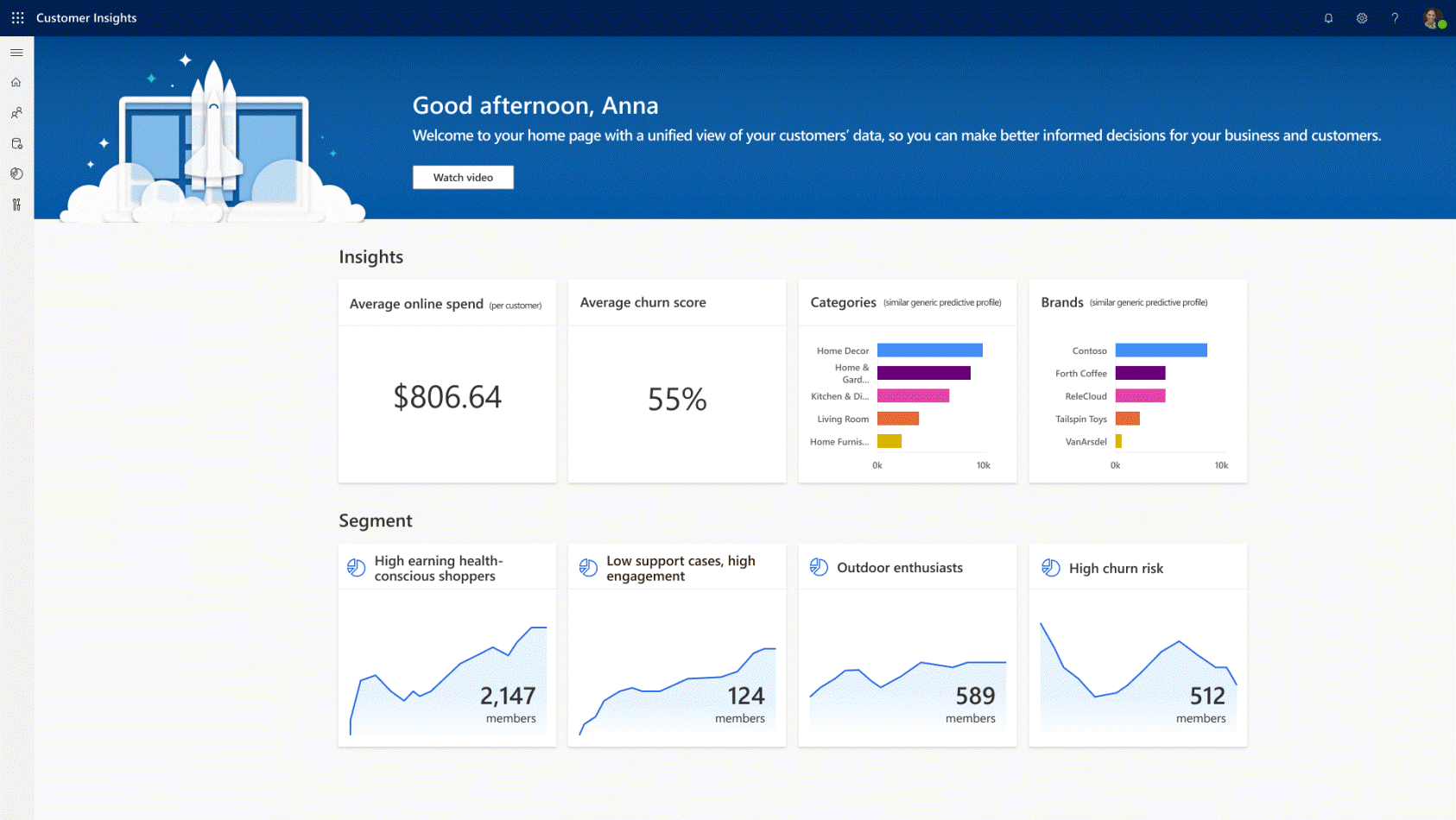Microsoft Dynamics 365 Customer Insights, in simple terms, is a master database of your customers and all the information you have on them, from their contact details to interactions with your company. It brings customer data from your disparate systems into one place so you can see every touch point a customer has with your brand.
In this blog, we’ll be talking about the key features of Customer Insights and how the platform can generate true value for your business.
- Gain a 360-degree view of your customers
- Deliver more personalised experiences
- Quickly act when required
- Adapt the platform according to your needs
Gain a 360-degree view of your customers
Customer Insights unifies your customer data across a wide range of sources so you can gain a single view in real-time. That means whatever you might need to know, from transactional to behavioural data, you only need to look in one place. Then you can ensure your customer profiles are always up-to-date.

An example dashboard (credit)
You’ll also benefit from AI and machine learning-infused recommendations. For example, automated signals from Microsoft Graph’s audience intelligence, market trends and customer feedback will help you enhance your customer profiles.
Deliver more personalised experiences
Gain a complete view of your customers and you can better understand what they want. Then, you’ll find it easier to offer more personalised experiences. AI insights, for instance, will allow you continuously adjust your customer profiles so you’ll always be improving your knowledge of your audience.
Discover in-depth insights and take action
Customer Insights allows you to dig deeper into your customers’ preferences and act based on your learnings. Here are some features:
- Using out-of-the-box machine learning templates, you can set up next best action and product recommendations.
- AI-driven recommendations allow you to discover new audience segments.
- Connect with other Microsoft products and third-party integrations and gain real-time data into your marketing campaigns, sales performance, lead quality and more.
- Use Power Automate to create automated workflows that trigger in response to customer signals.

This means you can automate various manual processes, reducing the time you’d spend on these tasks. Now you can focus on analysing customer data rather than searching for what you need. Automation also reduces the chances of human error and improves productivity.
Adapt the platform to your needs
The Customer Insights platform is intuitive and user-friendly. You can get up and running quickly, thanks to guided experiences. To get even more out of your platform, you can:
- Integrate with Azure Synapse Analytics and combine customer data with financial, operational data and build your own machine learning models.
- Connect with Microsoft Power BI and customise dashboards and reports.
- Use Microsoft Power Apps to build custom apps and get even more out of your customer insights.
Technology can transform your business. Here’s where you can learn more
Microsoft Dynamics 365 Customer Insights can help you harness the power of AI for your business. As a whole, technology can help you gain the knowledge you need to personalise engagement, ultimately, transforming you into a business that puts customer centricity first.
Want to discover more about the other types of technology that can help propel your business forward? Our guide to digital innovation covers the key tech you need (such as an ERP system and predictive analytics), the steps you should take for a digitally transformed future and more.
Click the button below to get started.

